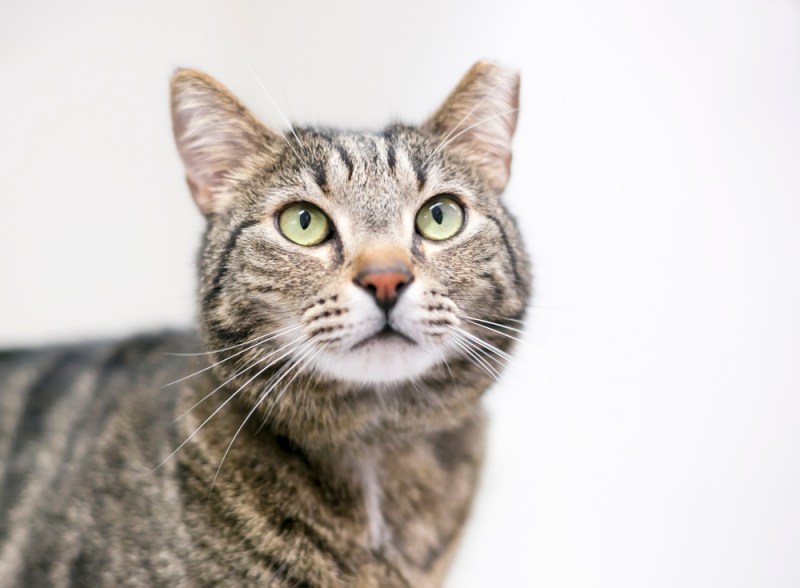Countless cats roam the streets every day. Observing a homeless stray cat wandering outside alone, possibly hungry with no proper shelter, can be upsetting for an animal lover. But, how can you be sure that the cat is a stray, an outdoor cat, or a feral cat that lives outdoors?
When in doubt, check the ears. If you notice that the outdoor cat has a small piece of their ear tip missing, this is an indicator that the cat is feral and should be left alone unless they appear unhealthy or injured.
What is Ear Tipping?

Ear tipping is a universally accepted way to tell whether a feral cat has been spayed/neutered and vaccinated. It provides immediate visual identification to animal control and the community that the cat has been previously altered, vaccinated, and part of a TNRM (trap-neuter-release-monitor) program.
Ear tipping is done by a qualified veterinarian, who removes about one centimeter of the tip of an adult cat’s ear, usually the left side. The procedure is widely accepted as both safe and humane, as the cat is under anesthesia, receiving a spay/neuter at the same time.
Ear tipping prevents feral cats from enduring the stress of being re-trapped, possibly receiving multiple vaccinations, and experiencing multiple unnecessary surgeries.
What is TNRM?

TNRM or trap-neuter-release-monitor is a non-lethal, humane method that is universally utilized to control and stabilize cat colonies in the community. TNRM involves spaying or neutering, vaccinating, and ear tipping, then returning the cats to their territory or colony to live out their lives.
On the first take, cat lovers may immediately feel that the TNRM program is somewhat of a harsher method. They may wonder why feral cats aren’t rescued and given a second chance by being placed in a shelter for adoption, like any other homeless cat. Unfortunately, according to the ASPCA, “Community cats who end up in shelters make up a large percentage of cats euthanized throughout the country every year.”
For the longest time, many communities agreed that the proper way of dealing with feral cats’ overpopulation was to trap and remove the cats, the outcome, unfortunately, being euthanasia, according to Neighborhood Cats. Although this method removed some cats, it did not solve the problem. Neighborhood Cats reported that removing community cats from their territory is only a temporary fix, creating a “vacuum effect,” drawing other feral cats to the area searching for a food source. Eventually, those cats will breed, leading to the problem that was already “fixed.”
The ASPCA states that “Community cats are not adoptable and shelters rarely will accept them.” They explain that community cats often exhibit behaviors that are not suitable for domestic life, such as being wild, shy, or frightened. Feral cats are suited to life outdoors and appear happier there, avoiding human contact in their territory.
Therefore the ASPCA has endorsed the Trap Neuter Return and Monitor program as the only proven humane and effective way to manage feral or community cats within society. If you come upon a cat in your neighborhood with a tipped ear, please leave it alone unless you believe it needs veterinary assistance.
How Does TNRM Help?

TNRM is the most humane and cost-effective way of addressing the feral cat population in communities. By spaying and neutering, feral cats will no longer reproduce, decreasing their colony size over time. Spaying and neutering also reduce the likelihood of nuisance behaviors seen in unfixed feral cats, such as spraying, fighting, yowling, and other community annoyances.
Spaying and neutering also eliminate the risk of uterine, ovarian, or testicular cancer. Additionally, no longer driven to mate, male cats are less likely to engage in fights and cause injury to one another. Spayed females will no longer attract unwanted tom cats to the area, keeping the colony size under control.
Are Ear Tipped Cats Suffering?

The ASPCA has stated that community cats who end up in the shelters make up many cats who are euthanized in the country every year. They also noted that community cats are difficult to adopt due to their behaviors, which are more suited for the outdoors. We can conclude that feral cats who are captured, ear-tipped, and released back to their territory are not suffering. We can also infer that feral cats captured and kept in a shelter most likely do suffer.
Should we believe that an animal would be happier being euthanized after sitting at a shelter unwanted for months than being free-roaming, ear-tipped, vaccinated, and spayed/neutered? The Feral Cat Project argues that if we find a feral cat’s life is inhumane, an animal that can seek out shelter, find food, avoid human interaction, and defend itself, we should consider that all wildlife is suffering. It can be difficult for animal lovers to detach emotionally from seeing feral cats, as it’s a species humans have domesticated. However, feral cats are wild and built to survive in their environment while leading a happy life outdoors, away from humans.
